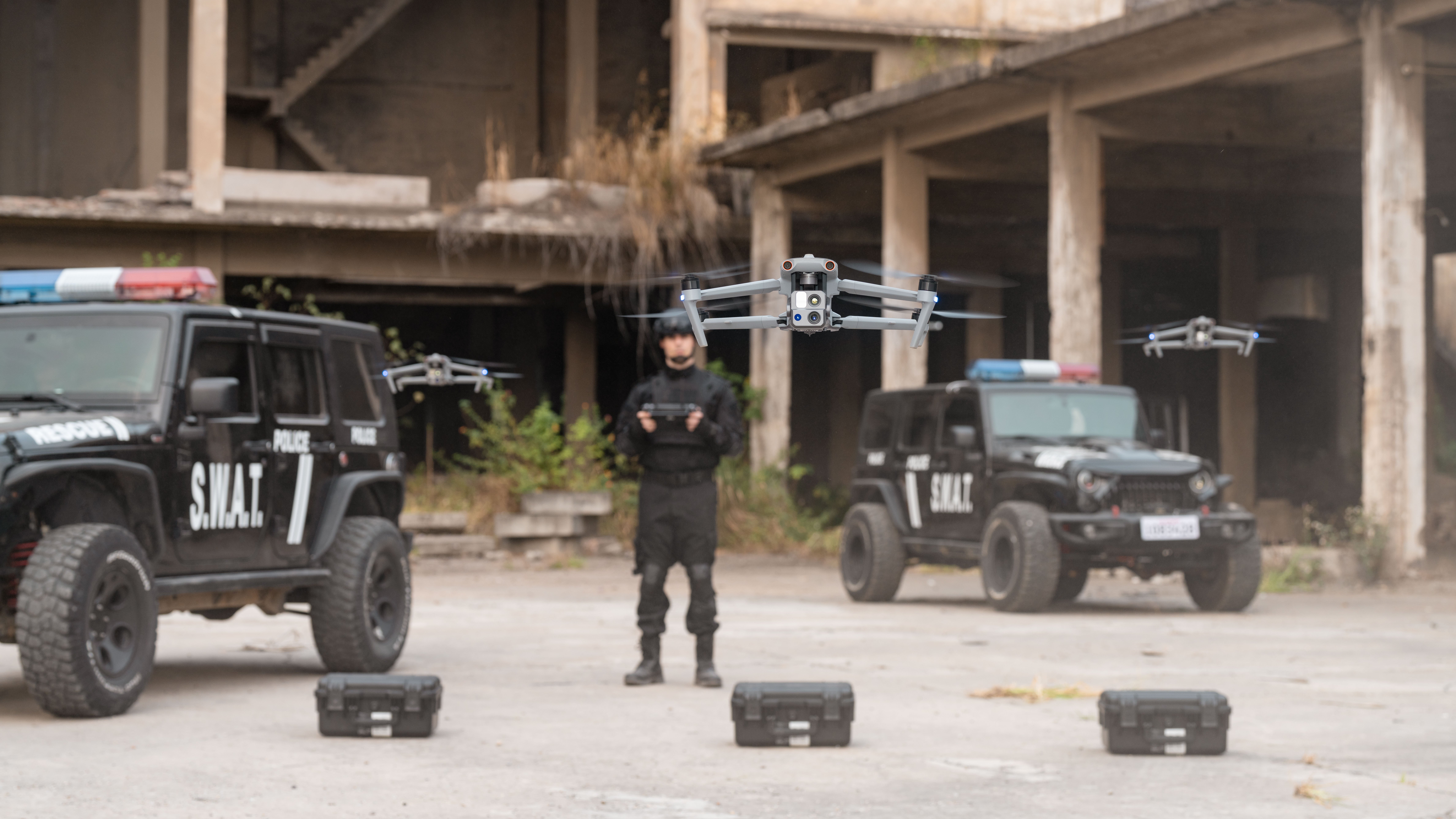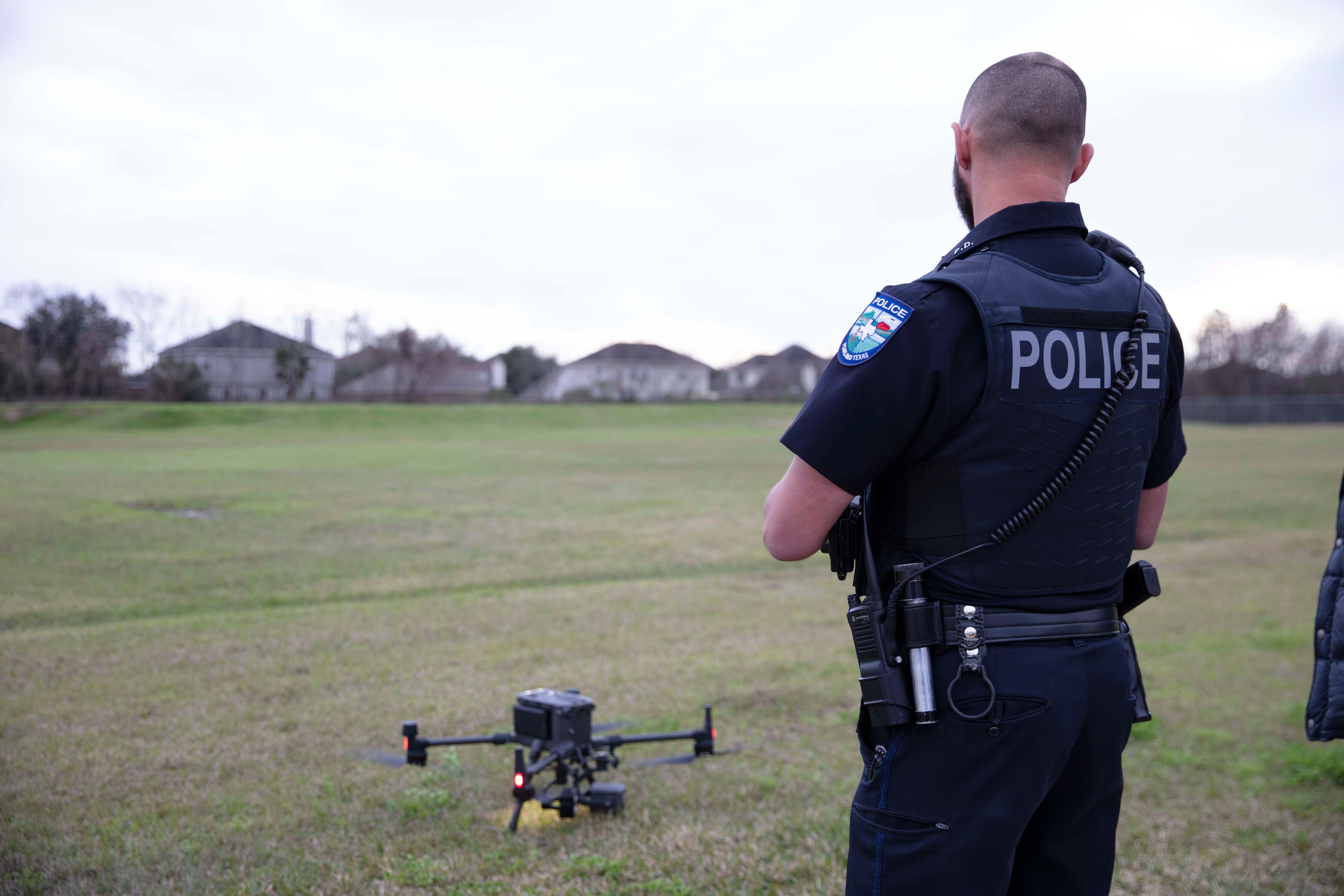Share this
Drone Technology for Active and Barricaded Shooter Response: A Game-Changing Approach
by DroneSense on 8/9/23 10:42 AM
You’ve seen it, another harrowing news headline that instills fear into the hearts of citizens and reveals the unsettling reality of active and barricaded shooter incidents. In the past decade alone, the world has witnessed a series of devastating incidents that have forever changed the landscape of public safety. Consider this: Over half of the 35 deadliest mass shootings in the last 120 years occurred in the last decade. These alarming events have brought immeasurable grief to communities and shaken the very foundation of security and peace. From schools and workplaces to entertainment venues and places of worship, no corner of society seems immune to the threat. In fact, shooter situations often start and evolve quickly, and are almost always unpredictable.
The tragic consequences of these incidents have compelled officials to reevaluate their approach to emergency preparedness and response. Conventional strategies have proven inadequate in the face of such unpredictable and rapidly evolving threats. In this critical juncture, there arises an urgent need for innovative solutions that can bolster their ability to safeguard lives, minimize casualties, and provide effective support to those facing such traumatic incidents.
Enter drone technology.
In this blog post, we’ll explore the possibilities of leveraging drone technology for active and barricaded shooter response. We’ll also touch on the multifaceted capabilities of drones and how they can become a formidable force multiplier in enhancing public safety.
Current Drawbacks in Active and Barricaded Shooter Response
As active and barricaded shooter incidents continue to escalate in frequency and impact, our traditional approaches to response face mounting challenges. Conventional emergency response strategies - although well-established - often fall short in effectively addressing the complexities of these volatile situations. Drawbacks such as:
- Limited Situational Awareness: Shooter scenarios often unfold in chaotic, fast-paced environments, making it difficult for responders to grasp the full scope of the situation. As a result, critical decisions may be delayed or made with inadequate information, potentially exacerbating the crisis.
- Risk to First Responders: First responders are usually the first to rush to the scene, putting their lives on the line to protect others. However, the inherent dangers of shooter situations put them at substantial risk. Without proper knowledge of the situation inside the affected area, responders may face unpredictable and life-threatening encounters, increasing the likelihood of casualties among the very individuals tasked with saving lives.
- Communication and Coordination Breakdown: Clear and efficient communication is paramount during crisis situations. Yet, the panic that ensues during an incident can lead to communication breakdowns between law enforcement agencies, emergency responders, and on-site personnel.
- Timely Threat Detection: Early detection of a shooter is vital in preventing or minimizing the harm caused. However, identifying potential threats before they escalate into violence remains a significant roadblock. Traditional surveillance systems may have limitations in quickly detecting suspicious behaviors or weapons, potentially hindering timely intervention.
- Access to Real-Time Intelligence: Gathering real-time intelligence is essential for making informed decisions, but limited visibility and potential dangers can hinder the collection of critical information. Lack of precise data on the assailant’s location, the number of potential victims, and the layout of the area can hinder response efforts and put lives at risk.
- Resource Constraints: Responding to shooter incidents requires substantial resources, including personnel, equipment, and logistical support. However, many communities and agencies face resource constraints that can impact their ability to mount a comprehensive response. Budget limitations, outdated equipment, and inadequate training may hinder the effectiveness of their response efforts.
Drone Technology as a Force Multiplier
In the face of active and barricaded shooter response, the use of drones as first responder (DFR) emerges as a groundbreaking approach. These drones can be dispatched to the incident location - in under 2 minutes - for real-time surveillance, providing a live aerial view to Incident Response Units and Command Centers, helping to facilitate operations and pinpoint potential threats, entry points, exits, and the broader situational context. Their deployment diminishes the risk to responders, all while collecting crucial data to inform tactical decisions.
The utilization of drone technology transcends its role as a mere tool; it becomes a force multiplier for law enforcement and emergency response teams. Drones bring a myriad of advantages that augment the capabilities of responders, exponentially increasing their effectiveness in managing shooter incidents. Here's how drone technology acts as a force multiplier in these situations.

The Benefits of Drones in Active and Barricaded Shooter Scenarios
Pre-Planning and Mapping
Drones can generate highly accurate 3D maps of buildings and surrounding areas. This pre-planning process is crucial for law enforcement agencies and emergency responders to familiarize themselves with the layout of the building. By creating comprehensive digital maps, responders can identify potential escape routes, safe areas for sheltering in place, and potential access points for intruders. This information allows for more efficient tactical planning during an active and barricaded shooter event, optimizing response times and potentially saving lives.
Improved Situational Awareness
Drones equipped with high-definition cameras and thermal imaging capabilities can provide invaluable real-time situational awareness to responders and law enforcement personnel. By capturing aerial views of the affected area, drones offer a comprehensive understanding of the scene, including the number of shooters, their movements, and the locations of potential victims and hazards. This enhanced situational awareness enables faster and more informed decision-making, ultimately improving the effectiveness of response strategies.
Rapid Deployment and Mobility
In critical situations like shooter incidents, time is of the essence. Drones can be rapidly deployed to the scene, overcoming geographical barriers and traffic congestion. Their agile and versatile nature allows them to navigate through tight spaces and reach areas that might be challenging for traditional response teams to access swiftly. This rapid deployment ensures that drones become the eyes in the sky, providing real-time information from the onset of the crisis.
Quick and Efficient Search and Rescue Operations
Locating and rescuing victims in a shooter scenario demands precision and speed. Drones equipped with thermal sensors and infrared cameras can detect body heat signatures, even in low-light or obscured environments, helping responders identify and prioritize potential survivors. By expediting search and rescue operations, drones play a crucial role in increasing the chances of saving lives.
Remote Monitoring and Surveillance
Drones enable remote monitoring and surveillance, allowing teams to gather essential information without exposing themselves to unnecessary risks. This aerial perspective provides continuous and discrete monitoring of the situation, facilitating a more comprehensive and strategic response.
Data Collection and Analysis for Incident Management
Drones not only capture real-time video footage but also collect data that can be invaluable for post-incident analysis and improvement of response strategies. The recorded data can be thoroughly reviewed to understand the sequence of events, identify areas for improvement, and enhance training protocols. The insights gained from drone-collected data contribute to refining shooter response plans and optimizing future emergency responses.
Enhanced Communication and Coordination Among Agencies
In multi-agency response scenarios, effective communication and coordination are paramount. Drones equipped with communication relay systems can serve as an intermediary bridge between different response teams, ensuring seamless information exchange and collaboration. This enhanced communication fosters a unified effort, preventing communication breakdowns and streamlining the overall response process.
Embracing Drone Technology as a Vital Tool for Active and Barricaded Shooter Response

In the relentless pursuit of enhancing public safety and fortifying our defenses against active and barricaded shooter incidents, drone technology emerges as a transformative solution that holds the potential to reshape crisis management and response strategies. Moreover, the potential for this technology is boundless. As advancements continue, we can envision a landscape where drones, equipped with cutting-edge sensors and artificial intelligence, play an even more vital role in safeguarding public safety.
To learn more about how DroneSense’s end-to-end drone software improves outcomes for public safety organizations and their communities, reach out to our team to schedule a demo.
In the meantime, check out a few of our other blog posts to see how leveraging drone technology can boost your drone operations:
- Enhancing Drone Operations: Benefits of Drone Management Software
- When to Deploy a Drone: Optimal Scenarios for Public Safety Applications
Share this
- September 2025 (1)
- July 2025 (2)
- June 2025 (1)
- May 2025 (1)
- February 2025 (1)
- January 2025 (2)
- December 2024 (3)
- November 2024 (2)
- October 2024 (3)
- September 2024 (1)
- August 2024 (2)
- July 2024 (3)
- June 2024 (2)
- March 2024 (2)
- February 2024 (1)
- January 2024 (2)
- November 2023 (2)
- October 2023 (4)
- September 2023 (2)
- August 2023 (4)
- July 2023 (4)
- April 2023 (1)
- February 2023 (1)
- November 2022 (1)
- June 2022 (1)
- April 2022 (1)
- September 2021 (1)
- July 2021 (1)
- June 2021 (2)
- March 2021 (1)
- March 2020 (1)
- February 2020 (1)
- August 2016 (1)
.png?width=489&height=100&name=DS%20VTM%20Logo%20Horizontal%20-%20Color%20Light%20(2).png)